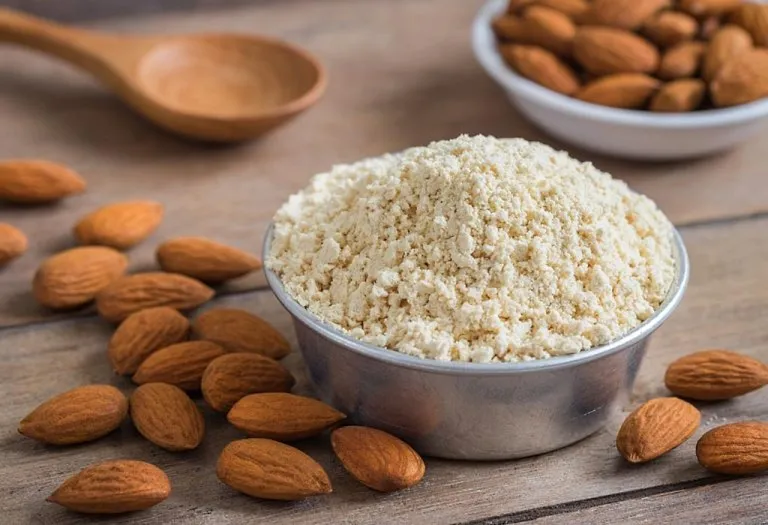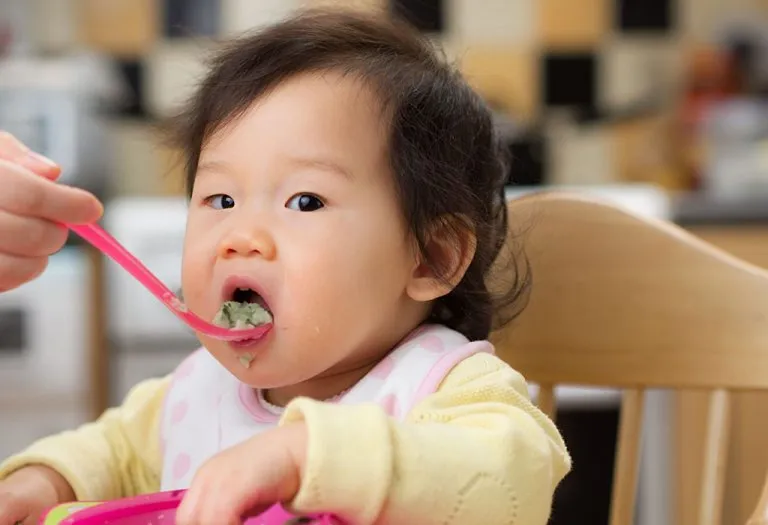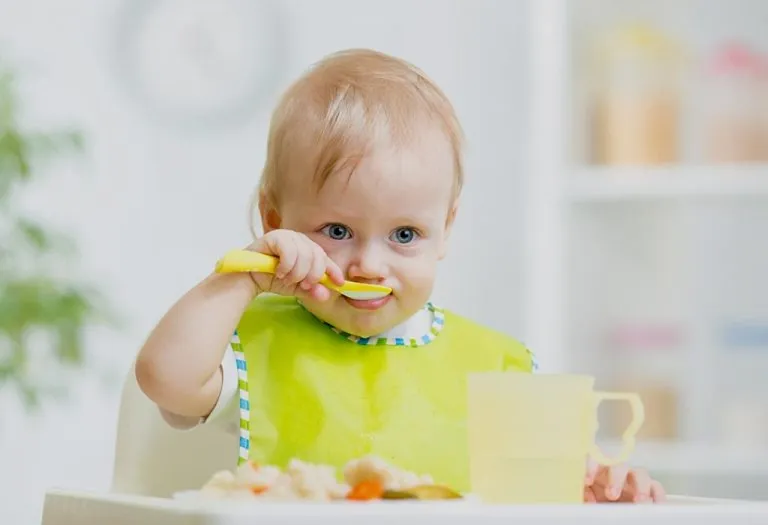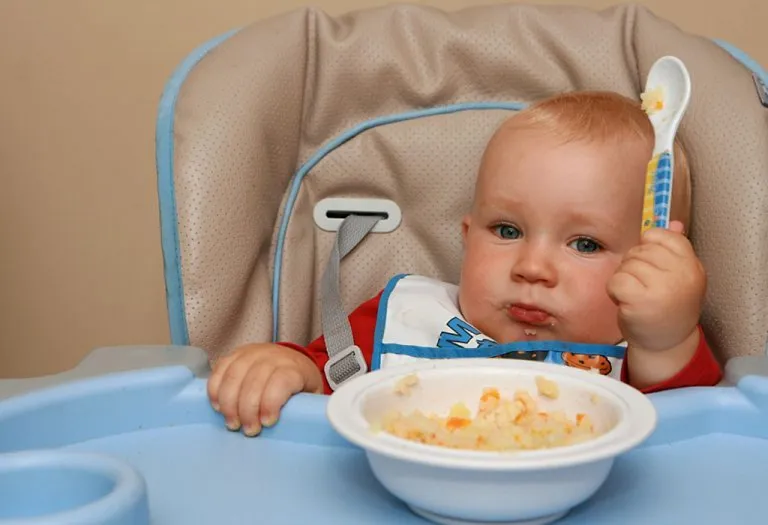Baby-Led Weaning (BLW) – When and How to Start
- What Is Baby-Led Weaning?
- When and How to Start BLW?
- Benefits of Baby-Led Weaning
- Disadvantages of Baby-led Weaning
- Baby-Led Weaning Vs Traditional Weaning
- Baby Led Weaning First Foods
- BLW Foods to Avoid
- BLW Foods By Age
- Safety Tips to Keep in Mind While Trying BLW
- Tips to Make BLW Successful
- FAQs
As soon as you plan to start your baby on solids, an assorted menu of pureed food runs through your mind. That’s a primitive method of introducing solids to your kids. The latest, of course, is baby-led weaning (BLW), which allows the baby to munch on whatever they like as soon as they are 6 months old. BLW encourages self-feeding, making mealtimes enjoyable and interactive for your little one. This approach not only helps develop their motor skills and hand-eye coordination but also fosters independence and a positive relationship with food. By exploring a variety of textures, colors, and flavors, your baby can expand their palate naturally. So, here is your chance to bypass pureed and jarred food and embrace a more engaging and fun way to let your baby eat what they like.
What Is Baby-Led Weaning?
What is BLW meaning? Baby-led weaning simply means allowing your baby to jump straight to finger foods as soon as they are ready for solids. No pureed or mashed or jarred food for your little one!
This method of introducing solid is termed as baby-led because here your baby gets to choose what he or she wants to eat and start eating on their own. This helps your baby to learn how to use the gum for chewing as they learn that they must chew first and then swallow their food. The bonus here is that the baby controls what and how much they put in their mouths. This means parents are freed from the responsibility of pushing food into baby’s mouth. Now, that’s a relief!
What Does Research Say?
The Ministry of Health recommends that parents introduce their little ones to solids once they turn 6 months old. New-borns at this age can have stronger necks and can even sit with some support. Their hand and eye coordination at this age can help them to grasp food and put it in their mouth.
When and How to Start BLW?
Once your baby is six months old, make them sit on your lap during mealtime and offer nutritious finger food that is appropriate for his age. You can start with cooked cauliflower or broccoli that is easy for your baby to clasp in their tiny hands. Initially, they may just play around with the food and then slowly start sucking it. Continue to breastfeed your baby in between meal times till they start eating solids properly. As their solid intake increases, his breastfeeds will come down.
Benefits of Baby-Led Weaning
Here are a few benefits of BLW that may encourage you to start the same with your baby.
- You don’t have to work on an exclusive baby menu every day. Training a child to eat adult food from the beginning can go a long way.
- There is no need to force food into baby’s mouth. Pressuring a baby to eat can be quite exhausting for both the parents and the baby.
- When the baby eats with you, you get to eat on time yourself. That can be quite relaxing.
- The baby grows up to learn self-regulation that may result in a healthy BMI.
- Baby learns to select their food as per their liking. This has proved to increase weight in children as they eat what they like wholeheartedly.
- BLW gives you an option to introduce healthy solids (age-appropriate) early in the life of your child. And, you never know, they may just hold on to these healthy food choices for life.
- Babies learn to handle food properly as they manage different texture, size, and shape of food. This way they also get fine motor practice through regular hand-eye coordination.
- Sitting with the family and eating meals with them is a healthy habit as it helps them to value family time. They learn what and how to eat by copying other members of the family.
- They will learn how to chew faster than babies who are spoon-fed. This is very important for digestion.
Disadvantages of Baby-led Weaning
There are a few disadvantages of BLW, and they are as follows:
- Baby eating finger foods on his own at such a tender age can be messy.
- Most of the food gets wasted and ends up on the floor.
- The supply of nutrients, especially iron may reduce. Hence, your doctor may give your baby a supplement for the same.
- It will be difficult for you to keep track of how much the baby has eaten as a majority of the food on the plate may find itself on the floor.
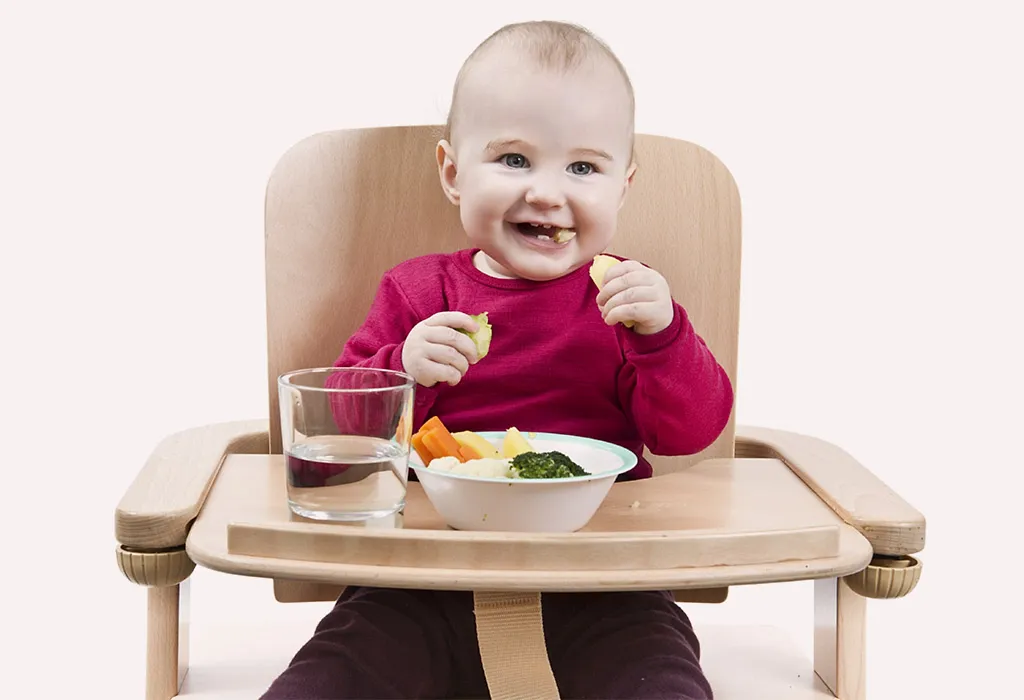
Baby-Led Weaning Vs Traditional Weaning
Both Baby-Led Weaning (BLW) and Traditional Weaning have their benefits, but the approach you choose depends on your baby’s development and your parenting style. Here, we compare the two methods to help you decide what’s best for your little one.
1. Method of Feeding
- Baby-Led Weaning (BLW): The baby is allowed to feed themselves from the start, using whole foods cut into safe sizes.
- Traditional Weaning: Parents spoon-feed the baby pureed food, gradually introducing different textures and solids over time.
2. Development of Fine Motor Skills
- Baby-Led Weaning (BLW): Encourages the development of fine motor skills as the baby grasps and brings food to their mouth independently.
- Traditional Weaning: Babies may develop hand-eye coordination later as spoon-feeding doesn’t involve much self-feeding or gripping.
3. Exposure to Different Flavors and Textures
- Baby-Led Weaning (BLW): Babies can explore a wider variety of flavors and textures from the start, offering a diverse sensory experience.
- Traditional Weaning: The transition from smooth purees to chunkier textures might be slower, with fewer early experiences with textures.
4. Choking Risk
- Baby-Led Weaning (BLW): While choking can occur, babies learn how to chew and manage food more naturally by the time they’re ready to eat solids.
- Traditional Weaning: Pureed foods are easier for babies to swallow, reducing the risk of choking, but may delay learning how to manage textures.
5. Parental Involvement
- Baby-Led Weaning (BLW): The baby is more independent and can feed themselves, but it requires parents to supervise closely.
- Traditional Weaning: Parents take a more active role in feeding, as they control portion sizes and food textures at each stage.
6. Mealtime Experience
- Baby-Led Weaning (BLW): Mealtimes are interactive, allowing babies to engage with their food and develop a sense of autonomy.
- Traditional Weaning: Mealtimes tend to be more structured and controlled, with a focus on getting the baby to eat specific amounts and types of food.
Baby Led Weaning First Foods
Just to make it a little easy for you, here is a list of first BLW foods that you can offer your baby as finger foods.
- Banana
- Pumpkin
- Sweet potatoes
- Avocadoes
- Soft cooked apples
- Soft cooked carrot, beans, and beets
- Green beans without the skin
- Well-ripened peach, pears, and melons
- Plums
- Meat or poultry
- Egg yolk
- Slices of bread, pasta, and rice
BLW Foods to Avoid
Before going through, keep in mind some baby-led weaning safety issues:
1. Foods With High Choking Risk
Some food items like nuts, grapes, tomatoes, whole hot dogs etc. will choke your little one often.
2. Foods That are Allergenic
Some foods have allergenic properties and must be avoided. For example, gluten, egg whites, peanuts, seafood, citrus fruits and the like. If any member of your family is allergic to any of these food items, it is more likely that your baby has inherited the same. You don’t want to take any risks!
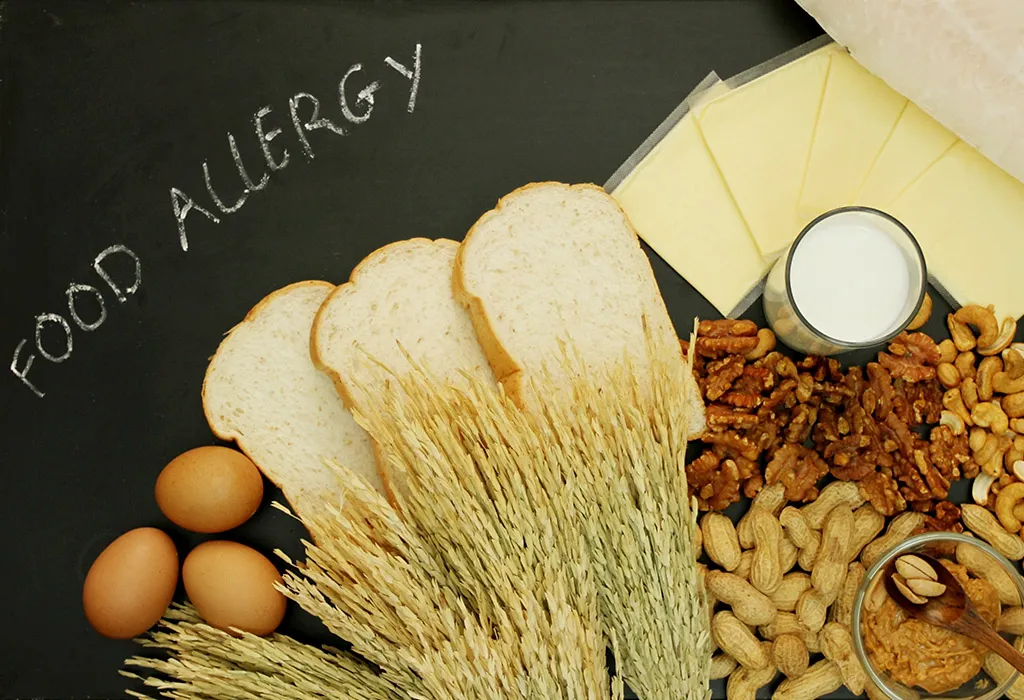
3. Foods With Added Salt or Sugar
Avoid adding any extra salt or sugar to your baby’s food. Let your baby enjoy the natural sweetness or saltiness of the food.
4. Processed and Unhealthy Foods
Processed foods are unhealthy for children and we all know that. Hence avoid giving chips, popcorn, sugared food, breakfast cereals, gum and hard candies.
5. Honey
Don’t introduce honey yet as it contains a bacterium called Clostridium botulinum which can damage the baby’s poorly developed digestive system!
6. Stimulants
Say ‘no’ to stimulants like chocolates or direct intake of sugar. These foods disturb your baby’s BMI in the long run and turn them hyperactive.
If your doctor approves of mineral sea salts, then go ahead and add it to your BLW baby’s food in very small amounts.
BLW Foods By Age
When following Baby-Led Weaning (BLW), it’s important to introduce age-appropriate foods to ensure your baby is getting the nutrients they need while exploring new textures and flavors. Here’s a guide to baby-led weaning ideas.
1. 6 – 7 Months Old
- Soft, ripe banana slices
- Steamed or boiled carrot sticks
- Small pieces of avocado
- Steamed or roasted sweet potato wedges
- Soft, peeled apple slices
- O-shaped cereal or puffed rice
- Soft, scrambled eggs
- Well-cooked and mashed peas (to self-feed with hands)
- Soft, shredded chicken or turkey pieces
- Thin strips of cucumber
- Small pieces of pear or peach
- Soft, steamed broccoli florets
2. 8 – 9 Months Old
- Small pieces of well-cooked pasta
- Soft, bite-sized pieces of soft cheese
- Well-cooked fish (such as salmon)
- Soft, steamed zucchini or squash sticks
- Small pieces of tofu or tempeh
- Soft fruit like strawberries or blueberries (cut into small pieces)
- Whole wheat toast with spread (such as avocado or hummus)
- Cooked lentils or beans
- Soft, peeled cucumber sticks
- Soft pieces of melon or watermelon
- Mini pancakes or waffles (cut into strips)
- Whole grain crackers or rice cakes
3. 10 – 12 Months Old
- Grilled or roasted chicken pieces (easy to pick up)
- Soft, bite-sized pieces of beef or lamb
- Small sandwiches with fillings like cheese, avocado, or mashed beans
- Soft, cooked vegetable sticks like parsnips or turnips
- Soft whole fruits such as kiwi, grapes (cut into quarters), or orange segments
- Whole grain crackers or breadsticks
- Mini muffins or small bites made with fruit and vegetables
- Mashed potatoes or roasted potatoes in soft pieces
- Soft-cooked quinoa or couscous
- Homemade meatballs or veggie balls
- Soft scrambled tofu or veggie frittata
- Rice or pasta salad with finely chopped vegetables
Safety Tips to Keep in Mind While Trying BLW
While Baby-Led Weaning (BLW) can be a fun and empowering experience for both babies and parents, it’s essential to follow safety guidelines to minimize risks. Here are some safety tips to keep in mind when practicing BLW.
- Always Supervise Mealtime: Never leave your baby unattended during meals to quickly respond if they need help.
- Offer Appropriately Sized Pieces: Cut foods into safe, manageable sizes, such as finger-length pieces, to avoid choking hazards.
- Avoid Choking Hazards: Steer clear of hard foods (e.g., whole grapes, nuts) and ensure foods are soft and easy to chew.
- Keep Foods Soft and Cooked: Ensure that fruits and vegetables are properly cooked to a soft, easy-to-mash consistency.
- Watch for Allergic Reactions: Introduce new foods one at a time, waiting 3-5 days before trying another, to monitor for any allergic reactions.
- Stay Calm and Be Prepared: Learn infant first aid and choking protocols so you can act quickly in case of an emergency.

Tips to Make BLW Successful
Baby-led Weaning (BLW) can be a rewarding journey that encourages self-feeding and helps your baby develop healthy eating habits. By following these tips, you can make the BLW process more enjoyable and successful for both you and your baby.
- Start at the Right Time: Wait until your baby is at least 6 months old and shows signs of readiness, like sitting up and showing interest in food.
- Offer a Variety of Foods: Introduce a wide range of fruits, vegetables, grains, and proteins to help your baby explore different tastes and textures.
- Keep Mealtime Relaxed: Make mealtime a positive experience by staying calm and patient and allowing your baby to explore foods at their own pace.
- Serve Soft, Easy-to-Grip Foods: Ensure foods are cut into age-appropriate sizes, such as finger-length pieces, and are soft enough for your baby to chew.
- Let Your Baby Lead: Allow your baby to control how much they eat, trusting their cues of hunger and fullness rather than forcing them to finish a portion.
- Be Prepared for Messes: Expect some messiness as your baby learns to eat, so use a bib and keep cleaning supplies handy for easy cleanup.
- Stay Consistent: Keep offering a variety of foods regularly, even if your baby doesn’t seem interested at first. Consistency helps them become more familiar with different foods.
FAQs
1. Can baby choke if you try baby-led weaning?
The most common doubt about BLW is if the baby will choke on the food while trying to eat by himself. This doubt is justified. Research says that if a baby can sit upright and eat, he/she should be fine. They should never be left alone with food.
- The baby’s hands must be washed before and after the meal to ensure that there is no food in their hands that they may put in their mouth while playing after the meal.
- Clip your baby’s nails to keep infections away.
- Your baby should sit on a high chair in an upright position. Eating while lying down is a complete ‘no’ as it could go down the wrong pipe.
- Allow the baby to eat at their own pace. Hurrying the baby could lead to choking.
- Don’t give any food that is too big for their mouth. Give them small bite-sized finger foods that are soft and easy to chew and swallow.
- Consult your doctor and take first aid lessons before starting BLW.
2. Will the baby get enough to eat?
Breastfeeding will supplement most of the baby’s nutrition from 6 to 12 months of age along with solid foods. The main purpose of starting BLW in the first year is to train a baby to chew and swallow. If the baby is active, healthy and gaining weight normally, then rest assured that your baby is doing well. Usually, a baby knows when he/she is hungry, and they eat enough to fill themselves. In case your baby is not gaining the desired weight, then you may want to add some smoothies and purees to your baby’s diet along with breastfeeding. In case you are unable to breastfeed, one can use baby formula and get the same results.
3. Can baby-led weaning help prevent picky eating?
Yes, research suggests that BLW may help babies develop a positive relationship with food by allowing them to explore a variety of flavors and textures early on, which can reduce the likelihood of picky eating later in life.
4. Can baby-led weaning help with teething?
Some parents find that BLW can aid in teething relief. Harder foods like cold cucumber or carrot sticks can help soothe sore gums while offering babies something to chew during this phase.
5. Does baby-led weaning help with speech development?
Interestingly, some research suggests that BLW can promote speech development. By learning to chew and manipulate different food textures, babies exercise their jaw muscles, which can help with the development of speech and oral motor skills.
The best part about BLW is that it can be worked around, and it is not an all-or-nothing situation. Always, consult your baby’s paediatrician for guidance when in case of doubt.
Baby-led weaning is a great way to introduce your baby to the family tradition of eating together. As they eat along with the rest of the family, they will learn not just how to eat by themselves but table manners as well!
References/Resources:
1. Baby-Led Weaning: What You Need To Know; Cleveland Clinic; https://health.clevelandclinic.org/baby-led-weaning
2. Carruth. B, Skinner. J; Feeding Behaviors and Other Motor Development in Healthy Children (2–24 Months) (Journal of the American College of Nutrition); Taylor & Francis Online; https://www.tandfonline.com/doi/abs/10.1080/07315724.2002.10719199; June 2013
3. Daniels. L, Heath. A, Williams. S, Cameron. S, et al.; Baby-Led Introduction to SolidS (BLISS) study: a randomised controlled trial of a baby-led approach to complementary feeding; BMC Pediatrics; https://bmcpediatr.biomedcentral.com/articles/10.1186/s12887-015-0491-8; November 2015
4. Townsend. E, Pitchford. N; Baby knows best? The impact of weaning style on food preferences and body mass index in early childhood in a case–controlled sample; BMJ Journals; https://bmjopen.bmj.com/content/2/1/e000298
5. Faith. M, Scanlon. K, Birch. L, Francis. L, Sherry. B; Parent-Child Feeding Strategies and Their Relationships to Child Eating and Weight Status; Wiley Online Library; https://onlinelibrary.wiley.com/doi/full/10.1038/oby.2004.212; September 2012
6. Baby-Led Weaning: Is It Safe?; American Academy of Pediatrics; https://www.healthychildren.org/English/ages-stages/baby/feeding-nutrition/Pages/baby-led-weaning-is-it-safe.aspx
Also Read:
Benefits of Weaning Baby
Recipes for Baby Led Weaning
Baby Weaning–Signs, Foods & Introduction to Solids
Was This Article Helpful?
Parenting is a huge responsibility, for you as a caregiver, but also for us as a parenting content platform. We understand that and take our responsibility of creating credible content seriously. FirstCry Parenting articles are written and published only after extensive research using factually sound references to deliver quality content that is accurate, validated by experts, and completely reliable. To understand how we go about creating content that is credible, read our editorial policy here.









